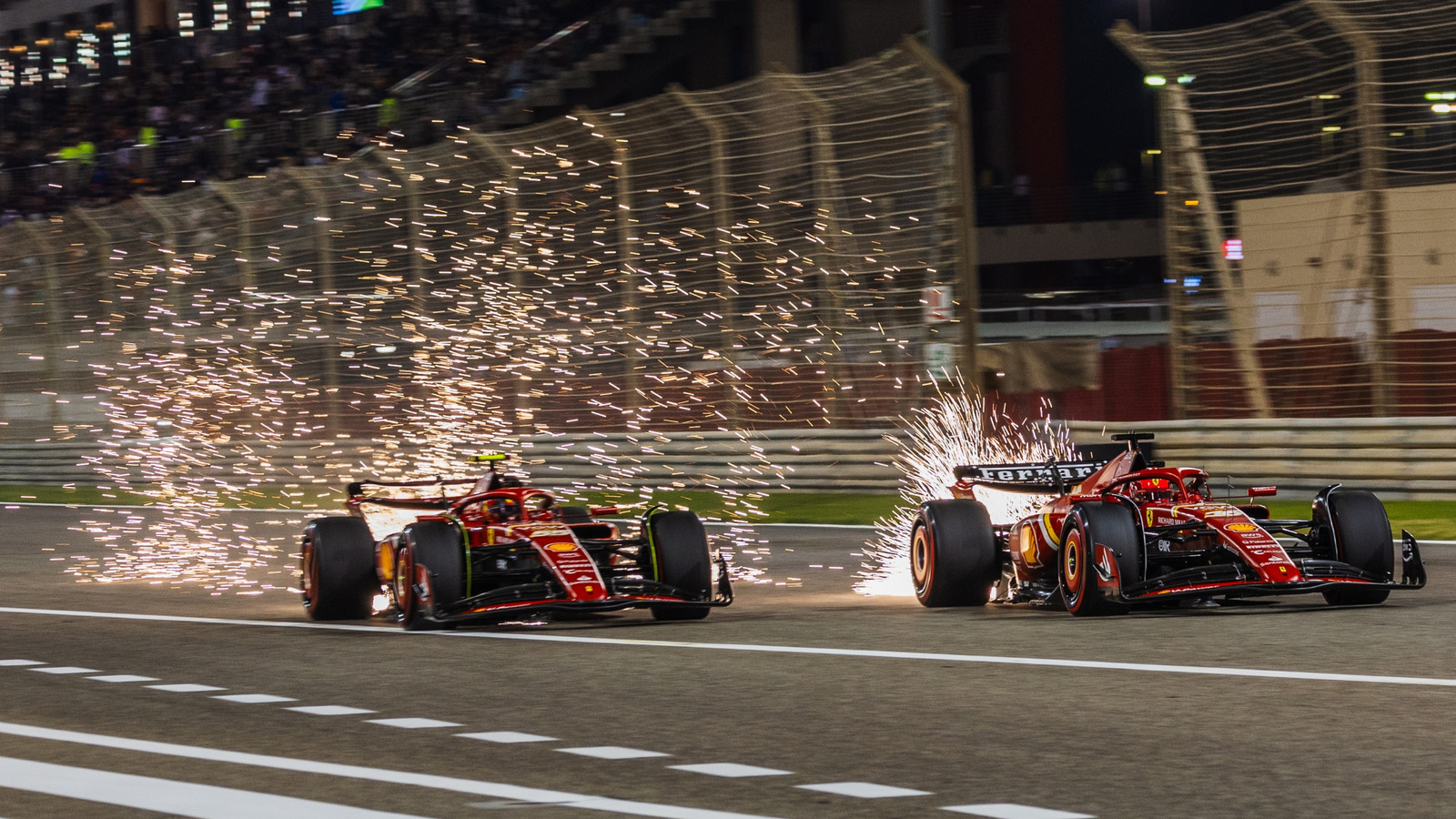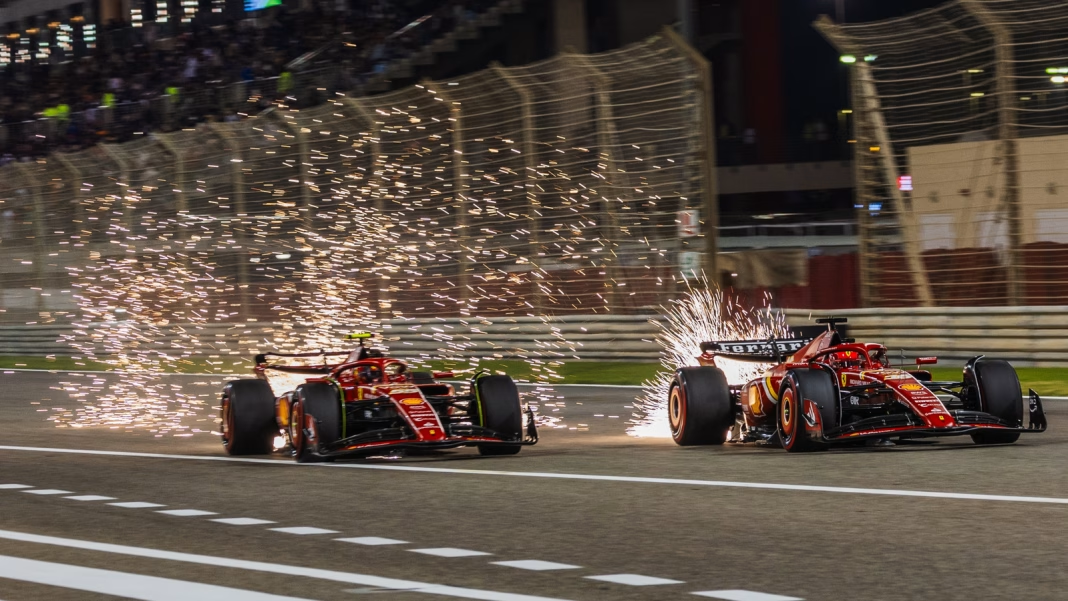Why Do F1 Cars Spark on the Track in the First Place?
If you’ve ever caught a Formula 1 race—especially at night or under the lights—you’ve probably seen those dramatic showers of sparks trailing behind the cars. It’s not just for spectacle. Those sparks are a byproduct of the engineering that goes into making these machines as fast and efficient as possible.
So, what’s actually happening? The sparks come from titanium skid blocks, often called “planks,” attached to the underside of each car. As F1 cars scream around the circuit at over 200 mph, their suspension compresses under the immense aerodynamic downforce. This causes the car’s floor to scrape the track, and when the titanium meets the asphalt, sparks fly. It’s pure physics—no pyrotechnics required.
What’s the Purpose of the Skid Blocks and Why Titanium?
You might wonder: why use titanium, and what’s the point of these planks anyway? The answer lies in both safety and performance. The FIA (Formula 1’s governing body) requires these skid blocks to ensure cars don’t run too low to the ground, which could create dangerous levels of downforce or even cause the car to bottom out and lose control.
Titanium is the material of choice because it’s strong, lightweight, and produces those bright, visible sparks instead of duller ones you’d get from other metals. Plus, it wears down at a predictable rate, which helps teams monitor how much the car is scraping and adjust their setups accordingly. If a team wears down the plank too much during a race, they risk disqualification—so there’s a real incentive to get it right.
How Downforce and Car Setup Influence the Sparks
Here’s where things get interesting for race engineers. The amount of downforce an F1 car generates is staggering—sometimes more than the car’s own weight. This force pushes the car down onto the track, improving grip but also increasing the likelihood of the floor making contact with the asphalt.
Teams walk a fine line: set the car too low and you’ll see a fireworks show (and risk damaging the plank); set it too high and you lose precious aerodynamic efficiency. It’s a constant balancing act, and the sparks you see are a visual clue that the teams are pushing their setups to the absolute limit.
Are the Sparks Dangerous for Drivers or Spectators?
Despite how dramatic they look, the sparks themselves aren’t dangerous. Titanium burns at a high temperature, but the particles are tiny and cool off almost instantly. Drivers are protected by fireproof suits and helmets, and the cars are designed to withstand much more severe impacts. For fans, the sparks are all part of the show—no risk of flaming debris flying into the stands.
That said, if a car bottoms out too aggressively, it can damage the floor or even destabilize the car. Teams keep a close eye on this, using sensors and post-race inspections to make sure everything stays within safe and legal limits.
Has the Amount of Sparking Changed Over the Years?
Absolutely. If you watch old F1 footage from the 1980s and 1990s, you’ll notice even more sparks than today. That’s because the rules around car height and materials have evolved. In 2015, F1 actually reintroduced titanium skid blocks after a period of using less spark-prone materials, partly to bring back the visual drama that fans love.
Modern F1 cars are also stiffer and run lower to the ground than ever before, thanks to advances in suspension and aerodynamics. The result? Those iconic sparks are here to stay, but they’re carefully managed to avoid compromising safety or performance.
What Do Sparks Reveal About a Team’s Strategy?
Believe it or not, the sparks can actually give away clues about how a team is setting up their car. If you see a car sparking more than its rivals, it might be running a lower ride height or stiffer suspension, aiming for maximum downforce on a particular track. On bumpy circuits, you’ll often see more sparks as the cars bounce and the planks hit the tarmac.
Engineers use high-speed cameras and telemetry to analyze where and when the car is bottoming out. Sometimes, a sudden shower of sparks can indicate a problem—like a failed suspension component or unexpected track surface change. In a sport where milliseconds matter, even the sparks are data.
Can You Spot the Difference Between Intentional and Problematic Sparks?
Most of the time, the sparks are just a sign of a car running as intended. But if you see a sudden, excessive burst—especially if it’s accompanied by a car bouncing or losing control—that’s a red flag. Teams will often call a driver in if they suspect damage to the floor or plank, since running afoul of the regulations can mean a post-race penalty or disqualification.
For fans, it’s a bit like reading tea leaves. The regular, rhythmic sparks are all part of the show. Anything out of the ordinary? That’s when engineers start sweating.
What’s the Real Impact of Sparks on F1 Racing?
Beyond the visual spectacle, the sparks are a reminder of how close to the edge F1 teams operate. Every detail—down to the thickness of a titanium plank—can make the difference between victory and defeat. It’s a dance of engineering, physics, and risk management, all playing out at 200 mph.
The big takeaway? Those sparks aren’t about perfection—they’re about smarter adjustments. Start with one change this week, and you’ll likely spot the difference by month’s end.


